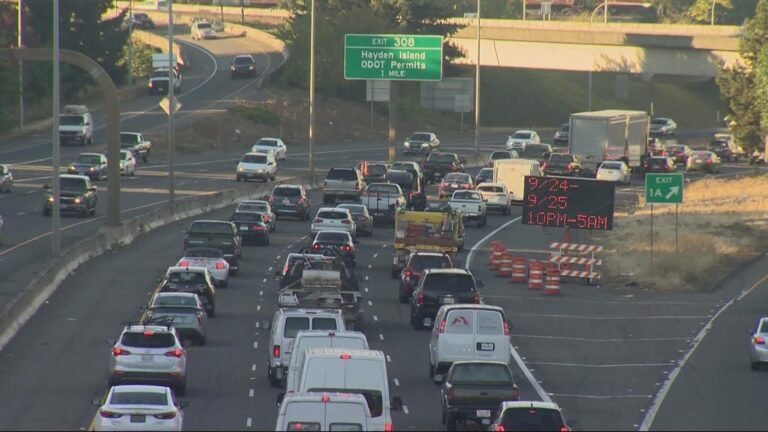AAA is planning a record number of trips nationwide throughout Independence Day week.
PORTLAND, Ore. — Oregonians planning to hit the road next week for Independence Day should prepare for heavy traffic. AAA is forecasting a record number of trips this holiday season, with approximately 70.9 million Americans expected to travel at least 50 miles from Saturday, June 29 through Sunday, July 7, including approximately 862,000 Oregonians.
With a national total of 67.4 million travelers, last year’s July 4 season was the first to surpass the pre-pandemic figure of 65.2 million travelers in 2019. The national forecast for this year represent an increase of 5% compared to 2023 and 8% compared to 2019. according to AAA forecasts.
This year, about 60.6 million travelers will drive, including about 676,000 Oregonians. An additional 5.7 million people – including 122,500 in Oregon – will fly. The AAA report urges travelers to check in 24 hours before their flight and expect long security lines at airports.
The AAA forecast calls for heavy traffic congestion on the roads every day from July 2-8, and conditions will tend to be worst in the afternoon. The report recommends leaving before noon or before 10 a.m., depending on the day.
In Oregon, Portlanders heading to Eugene or Hood River are likely to experience the worst traffic, according to AAA, with travel time to Eugene expected to increase by about 35% and travel time to Hood River expected to increase by 30%. The increased travel time will generally be worse for return trips, the report said, and drivers returning from John Day in particular should expect to encounter significantly more traffic than they did on the way out.
Cost of travel
Travelers battling queues this year have a silver lining: Most travel spending is expected to be about the same or slightly lower than last summer, according to AAA, particularly for travelers staying in the United States.
Domestic flights are about 2% cheaper than last year, car rentals are about 16% cheaper, cruises from domestic cities are 24% cheaper, and tours to domestic cities are 21% cheaper . The big exception is hotels, which are 17% more expensive domestically and 14% more expensive internationally. International flights are also up 7%, although international car rentals, cruise departures and city tours are still slightly cheaper.
Current gas prices are also slightly lower than last year nationally, and the gap is wider in Oregon. The national average is currently $3.50 per gallon and Oregon’s average is $4.07 per gallon, compared to $3.53 per gallon nationally and $4.64 per gallon in Oregon on July 4, 2023 — though AAA expects prices to rise in the days leading up to July 4.
RELATED: Five VERIFIED reasons why Oregon gas tends to be more expensive than most other states
Prices in Portland are the highest in the state at an average of $4.19 per gallon, according to AAA’s latest report, with other major Oregon cities ranging from $3.87 to $4.11 per gallon.
According to AAA, nationwide prices fell slightly this month after a typical spring surge, and Oregon prices remained relatively stable. Oregon prices remain higher than the national average, but that’s essentially always the case because of the geography of the West Coast.


